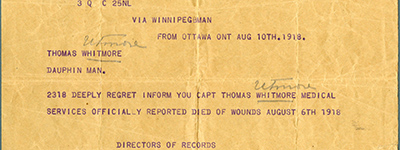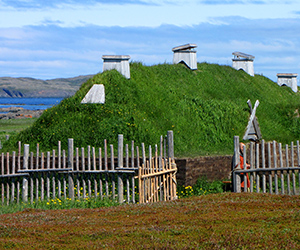CANADA HISTORY - Govenors General
The Marquess of Landsdowne

Henry Charles Keith Petty-Fitzmaurice, the 5th Marquis of Lansdowne, was a British aristocrat and statesman who played a significant role in Canadian history as the country’s 5th Governor General after Confederation. Lansdowne was born into the Irish nobility and, throughout his life, served in various high-profile roles within the British Empire. His tenure as Governor General of Canada, from 1883 to 1888, was marked by his travels across the vast and developing Dominion, his engagement with Indigenous communities, and his navigation of the political tensions of the Riel Rebellion. This article explores his life, accomplishments, and the key events that shaped his governorship, as well as his broader contributions to the British Empire.
Early Life and Political Career
Henry Charles Keith Petty-Fitzmaurice was born on January 14, 1845, into one of Ireland’s most distinguished aristocratic families. His father, the 4th Marquis of Lansdowne, was a prominent Whig politician and a cabinet minister under several British Prime Ministers. Raised in a family deeply involved in politics, Lansdowne was educated at Eton College and Balliol College, Oxford, where he developed a keen interest in public affairs and government.
At the age of 21, Lansdowne inherited his father’s title and became the 5th Marquis of Lansdowne, entering the House of Lords. His youth did not hinder his swift rise in British politics. By 26, he was appointed a Lord of the Treasury, and shortly thereafter, he served as Under-Secretary for War from 1872 to 1874. His reputation as a capable administrator grew, and in 1880, he was appointed Secretary of State for India, a prestigious post. However, his resignation from the position in 1882, due to differences with Prime Minister William Gladstone over Irish Home Rule, reflected his firm opposition to the movement, which aimed to establish self-government for Ireland.
Appointment as Governor General of Canada
In 1883, Lansdowne was appointed Governor General of Canada, succeeding the Marquess of Lorne. His appointment came at a critical time in Canadian history, as the country continued to expand westward and grapple with its relationship with Indigenous peoples, growing political divisions, and the challenge of uniting diverse regions under the Confederation model.
Lansdowne arrived in Canada with his wife, Lady Maud Petty-Fitzmaurice, and their children. Like his predecessors, Lansdowne and Lady Lansdowne became popular figures in Canadian society. Their residence at Rideau Hall in Ottawa was marked by frequent social events and official functions that helped foster connections between the viceregal office and the Canadian public.
Lansdowne’s aristocratic background and diplomatic experience made him well-suited to the role of Governor General, and he took his duties seriously. His term was not without significant events and challenges, including the Riel Rebellion and his efforts to promote Canadian unity and development.
Travels Across Canada
One of the most notable aspects of Lansdowne’s governorship was his extensive travels across the country. Canada was still very much a developing nation, with vast and largely uncharted territories. Lansdowne undertook two major trips to the west coast during his term, each highlighting different aspects of the country’s progress.
His first journey to the west coast was made largely by private means of travel. During this trip, Lansdowne visited several Indigenous communities, witnessing their rituals and ceremonies firsthand. His encounters with Indigenous peoples left a lasting impression on him, and he gained valuable insights into their cultures and their relationship with the Canadian government.
Lansdowne’s second trip west was more momentous, as it was made by way of the newly completed Canadian Pacific Railway. He became the first Governor General to use the transcontinental railway to travel across the entire country. The completion of the railway was a significant achievement for Canada, linking the eastern provinces with the western territories and solidifying Canada’s territorial claims and economic development. Lansdowne’s journey was seen as symbolic of the country’s unity and progress, and his use of the railway underscored the importance of infrastructure in shaping the young Dominion’s future.
The Riel Rebellion (1885)
Lansdowne’s tenure as Governor General coincided with one of the most challenging events in early Canadian history: the North-West Rebellion of 1885, also known as the Riel Rebellion. This armed uprising was led by Métis leader Louis Riel, who sought to protect the rights and land claims of the Métis and Indigenous peoples in what is now Saskatchewan and Manitoba.
The rebellion was a major political and military crisis for Canada, and Lansdowne, as the representative of the British Crown, played an important role in supporting Prime Minister Sir John A. Macdonald’s efforts to suppress the uprising. The rebellion was eventually crushed by Canadian forces, and Riel was captured, tried, and executed for treason later that year.
While the rebellion exposed deep divisions within Canadian society, particularly between French and English Canadians, Lansdowne maintained a steady hand throughout the crisis. His role during this period was largely supportive, as the decision-making rested with Macdonald’s government, but Lansdowne’s presence and symbolic authority helped maintain order and legitimacy during a turbulent time.
Outdoor Enthusiast and Fisherman
Beyond his official duties, Lansdowne was an avid outdoorsman and fisherman, and he quickly developed a love for Canada’s natural beauty. He was particularly fond of fishing in New Brunswick, where he established a summer residence, Stanley House, on the Baie des Chaleurs. Lansdowne’s passion for fishing was well-known, and over the course of four seasons, he reportedly caught an astonishing 1,245 salmon.
His enthusiasm for Canada’s wilderness and outdoor pursuits helped endear him to Canadians, particularly in rural areas, where hunting and fishing were central to life. Lansdowne’s connection to the land and his enjoyment of Canada’s natural resources also aligned with the country’s growing conservation movement, which sought to preserve the vast wilderness for future generations.
Return to England and Later Career
Lansdowne’s term as Governor General came to an end in 1888, and he returned to England, where his political career continued to flourish. Shortly after his return, he was appointed Viceroy of India, a position he held from 1888 to 1893. As Viceroy, Lansdowne oversaw British India during a period of significant political and economic development, though he also faced challenges such as growing Indian nationalism and unrest.
After his tenure in India, Lansdowne held several important posts in the British government, including Secretary of State for War during the Second Anglo-Boer War (1899–1902). His handling of the war was met with criticism, particularly for Britain’s lack of preparedness, but Lansdowne remained a key figure in British imperial politics. He later served as Foreign Secretary from 1900 to 1905, a role in which he navigated the complex diplomatic landscape of pre-World War I Europe.
In his later years, Lansdowne became a prominent advocate for peace. In 1917, during World War I, he published the “Lansdowne Letter,” which called for a negotiated peace with Germany. His proposal was controversial, as it came at a time when the British government was committed to total victory. Lansdowne’s letter sparked a heated debate in Britain, but it also highlighted his lifelong commitment to diplomacy and his belief in the power of negotiation to resolve conflicts.
Death and Legacy
Henry Charles Keith Petty-Fitzmaurice, the 5th Marquis of Lansdowne, died on June 3, 1927, at his daughter’s home near Clonmel, County Tipperary, Ireland. He was 82 years old.
Lansdowne’s legacy as Governor General of Canada is one of steady leadership during a period of expansion and change. His travels across the country, particularly his historic use of the Canadian Pacific Railway, helped to solidify Canada’s identity as a united Dominion stretching from coast to coast. His handling of the Riel Rebellion, while largely supportive of the government’s policies, ensured that the Crown’s authority remained intact during a time of political upheaval.
Beyond his political achievements, Lansdowne’s love for Canada’s wilderness and his engagement with its Indigenous peoples reflected a deep appreciation for the country’s diverse landscapes and cultures. His term as Governor General is remembered as one of quiet but effective leadership, and his contributions to both Canada and the British Empire have left a lasting mark on history.
The 5th Marquis of Lansdowne was a figure of considerable influence, both in Canada and throughout the British Empire. His time as Governor General of Canada was marked by his commitment to unity, his love for the country’s natural beauty, and his involvement in significant events such as the completion of the Canadian Pacific Railway and the Riel Rebellion. Lansdowne’s legacy extends beyond his term in office, as his career in British politics and his advocacy for peace during World War I demonstrated his lifelong dedication to public service and diplomacy. His tenure as Governor General remains a significant chapter in Canada’s early history as a Dominion, and his contributions continue to be remembered today.
Cite Article : Reference: www.canadahistory.com/sections/documents/documents.html
Source: NA



